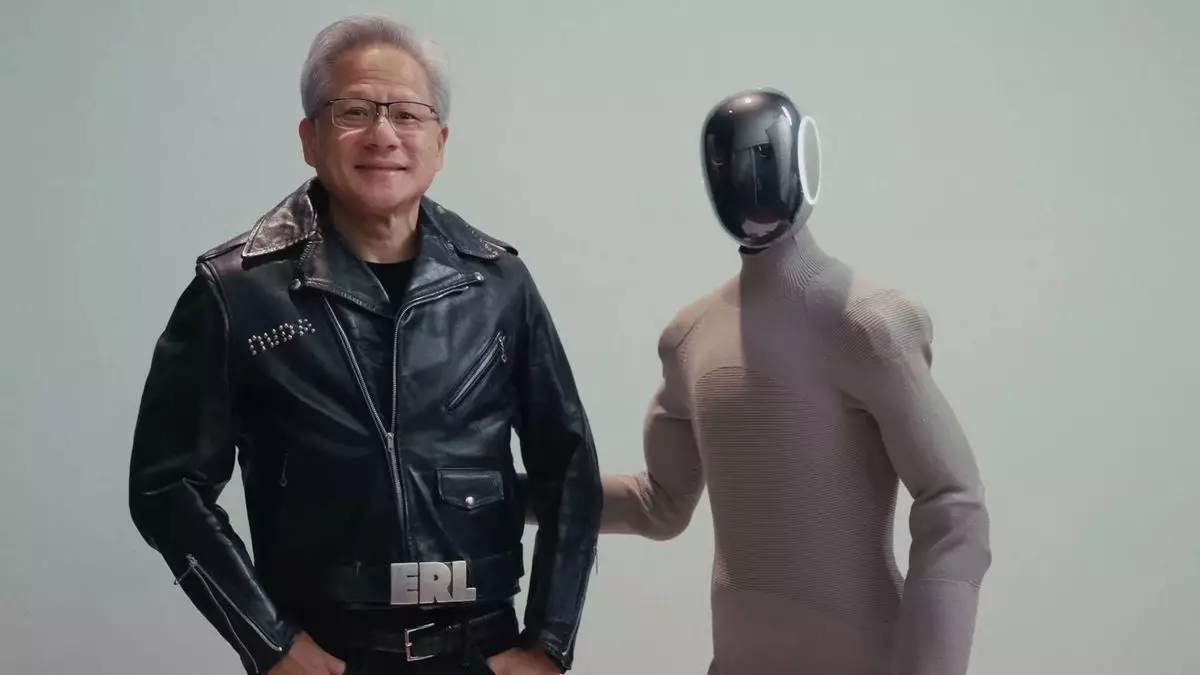The announcement of the Neo Gamma humanoid robot represents a bold step into the future of domestic robotics. In a collaborative endeavor between 1X Technologies and Nvidia, the announcement unveiled a trajectory that could fundamentally change the landscape of home assistance technology. With the unveiling of its quirky but stylish studded leather jacket, designed by the California-based ERL brand, the demonstration was an eye-catching fusion of high fashion and cutting-edge tech. Yet, beyond the aesthetic appeal lies a question: can humanoid robots truly penetrate our homes and transform our daily lives?
Founded initially as Halodi Robotics in Norway before rebranding in 2023, 1X Technologies has shifted its focus towards creating versatile humanoid robots suited for both industrial applications and the home. This is no ordinary undertaking; it aims to bridge the gap between human-like interaction and practical utility in everyday scenarios. The shared enthusiasm from both parties, as expressed by Eric Jang, the Vice President of AI at 1X Technologies, emphasizes a commitment to propelling general-purpose humanoid robots into the mainstream. Their partnership seeks to innovate solutions for autonomy, particularly evident in the planned demonstrations of Neo Gamma’s capabilities.
A Journey into Domestic Life
One of the intriguing aspects of this collaboration is its practical approach to real-world testing. The collaborative effort resulted in a week-long immersion for the Neo Gamma in a domestic environment, where it undertook various lightweight household tasks under close supervision. It’s somewhat humorous to reflect that even a robot requires constant oversight to complete mundane chores like loading a dishwasher—an everyday struggle for many households. The charm here is in the relatability; after all, if a robot can bumble through a task we find challenging, it does bring a sense of companionship to its mechanical endeavors.
What’s remarkable is the meticulousness with which the teams prepared the Neo Gamma’s autonomy demo, using cutting-edge technology and data-sharing APIs. By enabling Nvidia to access a comprehensive dataset, the collaboration has laid the groundwork for more profound insights into how humanoid robots can learn from their operational environments. Such data-driven approaches ensure that the robots can adapt to various tasks, potentially revolutionizing home management as we know it.
Technical Triumphs and Skepticism
The technical intricacies of the system are nothing short of impressive. Utilizing an onboard Nvidia GPU, the Neo Gamma can predict actions through a rapid vision-action feedback loop, allowing it to execute tasks like grasping a cup and placing it into a dishwasher. However, despite the alluring potential, one cannot overlook the hesitance surrounding the practical execution of these demonstrations.
While promotional content showcases the sophisticated movements of Neo Gamma in an idealized form, the reality often presents a less glamorous picture. The robot’s dexterity and poise appear at odds with its current capabilities, casting a shadow of doubt over how quickly we can expect to integrate such technology into our lives. The promotional videos, featuring the team physically assisting the robot, serve as a reminder that, for all its advanced technology, the Neo Gamma still has miles to go before it reaches a state of true autonomy.
The Wider Context of Robotics
Humanoid robots are experiencing something of a cultural moment. From the aspirations of tech giants like Elon Musk to the proliferation of AI-driven companions and pet-like robots, the market is flooded with promise. Yet, the human attachment to technology carries both hope and skepticism. The fascination with these humanoid machines often treads dangerously close to the uncanny valley, where lifelike appearance meets awkward functionality.
In this ongoing quest to position humanoid robots as essential household fixtures, this collaboration between 1X and Nvidia introduces a significant step forward, albeit one filled with potential hurdles. With thousands of hours of additional training needed to refine Neo Gamma’s abilities, we may be premature in envisioning these robots gracefully tackling our household chores anytime soon.
As voices in the tech community posit varying perspectives on the viability and desirability of humanoid robots, one thing seems clear: the road to a home seamlessly integrated with robotics is likely to be a long and winding one. The excitement surrounding these innovations suggests that while the dream may be alive, the reality remains a work in progress.

